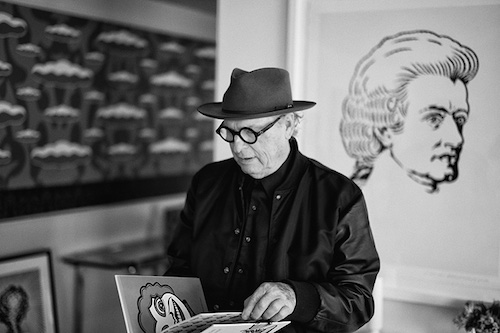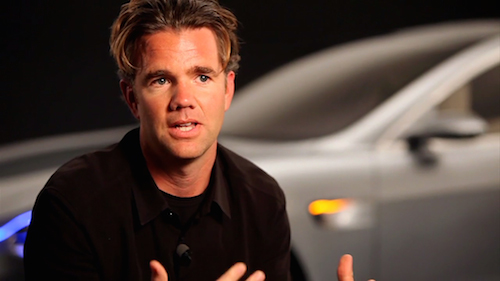
John Van Hamersveld
Before we gather with friends and family to celebrate the 4th of July, we want to take a moment to recognize the spirit of independence. At Art Center, we revere art and design warriors who embody this country’s pioneering spirit: the rebels, the change makers, the innovators, the futurists and the unapologetic patriots. On the eve of Independence Day, we’d like to devote some pixels to a few of our unrivaled alumni who blazed their own paths, and who embody the same spirit of sovereignty that founded this country.
The Fourth of July is an opportunity to celebrate independence, which we tend to do over a barbecue grill loaded with savory treats, or sitting at the edge of a pool. Independence Day is the pinnacle of summer. We’re often reminded of John Van Hamersveld’s (BFA 64 Advertising) poster for The Endless Summer, which evokes the dreamy colors of California. His design came to define the iconography of surf culture. According to Vanity Fair, the poster, now over 50 years old, “hasn’t aged a minute.”
“Originally intended for a very small and very specific segment of the population located on the southern portion of the California coast, mermen and mermaids under 18 years of age who practically lived in their trunks and itsy-bitsy-teeny-weenies, the poster became a genuine phenomenon, spanning borders, class, time itself,” the article continues.
Today the poster is a familiar emblem of beach life, but 50 years ago, its use of vibrant fluorescent colors and astute anticipation of the soon-to-come popularity of Pop, was revolutionary. Van Hamersveld launched a career from a poster he created while still a student at Art Center; it was the sole item in the portfolio that landed him a job at Capitol Records, where he designed album covers for The Beatles (Magical Mystery Tour), The Rolling Stones (Exile on Main St.), The Grateful Dead (Skeletons From the Closet), Blondie (Eat to the Beat) and Kiss (Hotter than Hell).
While California summers are often associated with bikinis, beaches and surfers, another subculture with equally fervent fans is that of car enthusiasts and auto lovers. Tesla Motors has become “the most important automaker in the world,” according to Morgan Stanley. Per the company’s website, “Tesla Motors was founded in 2003 by a group of Silicon Valley engineers who set out to prove that electric vehicles could be awesome.” Good design certainly helped Tesla produce awesome electric vehicles, and credit is due to Chief Designer Franz von Holzhausen (BS 92 Transportation). In describing his approach to creating the signature Tesla look, he told Forbes, “What I really wanted to achieve was this moth-to-the-flame [result]. You don’t really realize what you are looking at or why you are attracted to it, but you are.” Tesla has changed the way we look at and think about electric cars. They don’t need to be mere utilitarian vehicles; they can be sexy beasts. That outside-the-box thinking took Tesla from underdog, to pioneering game changer.
Sterling Ruby (Graduate Art 2002–2005) is an artist who has navigated the art world on his terms. No longer the new guy on the scene, Ruby is a media darling, with exhibitions around the globe and representation by powerhouse gallery Hauser & Wirth. Refusing to be pigeonholed, he works in many mediums, most of them large, including sculpture, drawing, painting and ceramics.
He recently told W Magazine that his breakout solo museum exhibition, “SUPERMAX 2008,” at MOCA, “amounted to a forceful reaction against the theory-heavy curriculum at Art Center….” Despite the quarrel with his formal studies, his work is clearly influenced by the late Mike Kelley, with whom he studied at Art Center and later assisted in the classroom.
Ruby has consistently been a financially viable artist, and in earlier years, his autonomy caused some old guard tastemakers to view him and his work with skepticism. However, he credits Kelley with teaching him to be pragmatic with money and is consequently unfraid to toggle between the purely commercial, as well as the artistic realm. Case in point: His recent successfull collaboration with fashion designer Raf Simons. Sterling treads the line between creating sublimely subversive high art and the simple romantic notion of being a guy who, “insists that his real job is making stuff, and [going] to work like a blue-collar man.”
Or, put another way, for these visionary artists, industriousness is their own declaration of creative independence.











great for helpful thank you very much